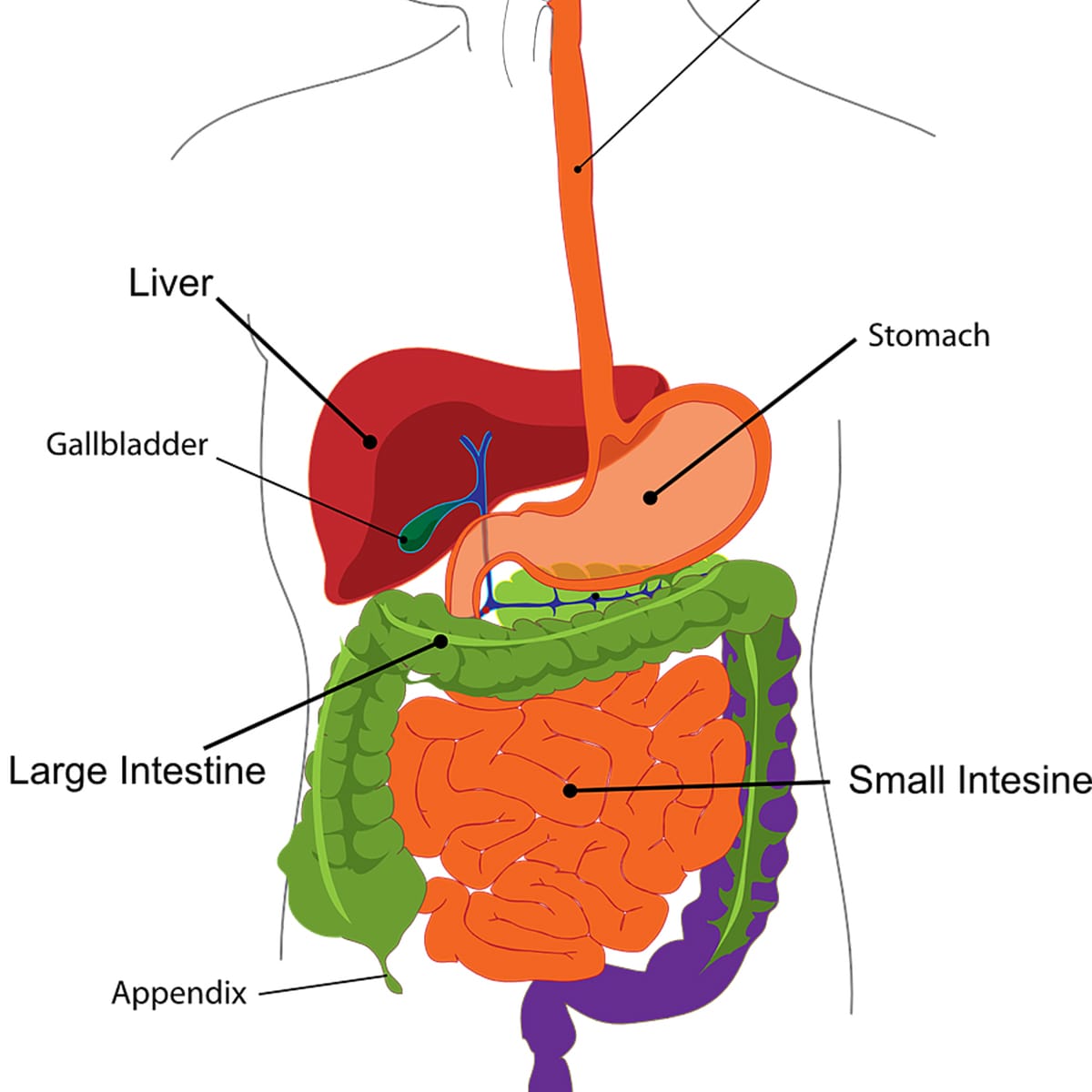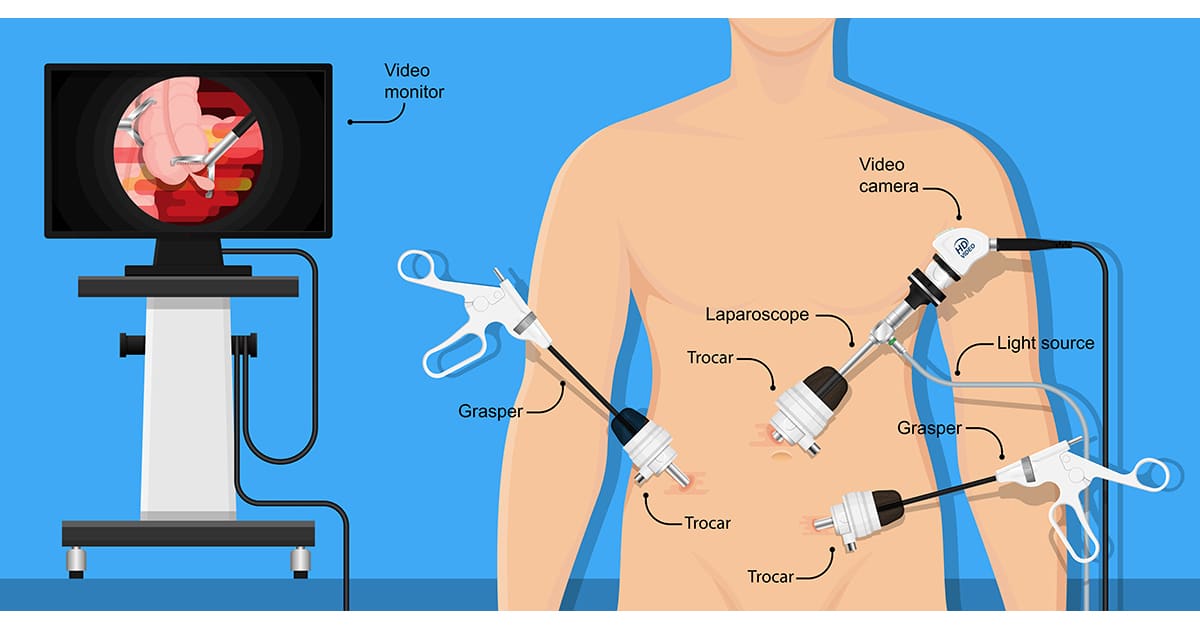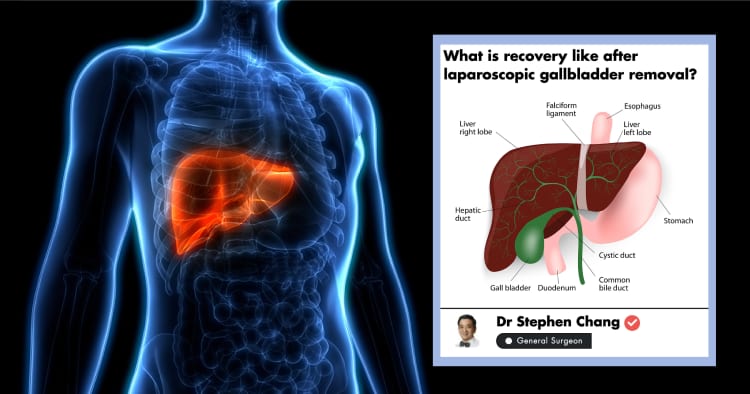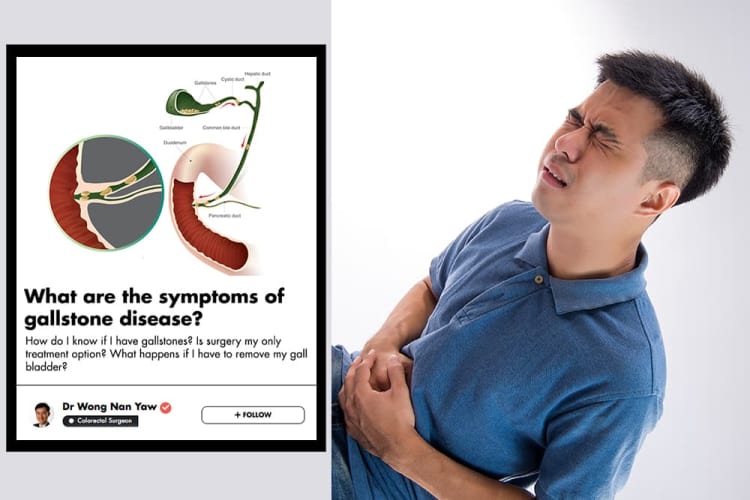Gallbladder removal is a fairly common procedure that many people have gone through. There are certain factors that can lead to this operation being required and in most instances, the removal process is easy and largely successful.
As can be expected, there is a phase of recovery that patients have to deal with.
General surgeon, Dr Stephen Chang, shared details about recovery process after gallbladder removal surgery on Human.
What Is The Purpose Of The Gallbladder?

The gallbladder is a small organ that's located just below the liver.
Its primary purpose is to store bile which is produced by the liver. The gallbladder releases bile in small dosages when a meal is eaten with fats that need to be digested. [1]
When Is Gallbladder Removal Surgery Necessary?

Sometimes, the gallbladder does not work very efficiently and the development of gallstones (hard deposits made from bile that is stuck in the body) can occur. Gallstones can also lead to gallbladder inflammation. [2]
What Is A Cholecystectomy?
A cholecystectomy is the removal of the gall bladder through surgery. This is done for patients who have gallstones and other problems that are commonly associated with the gallbladder. [3]
How Is The Gallbladder Removal Performed?
Doctors typically perform the procedure by inserting tiny video cameras for better visibility while using special surgical tools to make incisions inside the abdomen, after which the gallbladder is removed.
This type of procedure is called a laparoscopic cholecystectomy. It usually takes one or two hours in total. [4]
What Is Minimally Invasive Gallbladder Removal Surgery?

With the advances in medical science, the gallbladder can be removed through the use of minimally invasive techniques, also known as single-incision and four-port laparoscopic cholecystectomies.
Single-incision laparoscopic cholecystectomy - A relatively new procedure that involves a single-entry keyhole point at the patient's bellybutton, leaving behind a small scar that’s barely visible.
Four-port laparoscopic cholecystectomy - A standard procedure that involves 4 trocars (a surgical instrument) used to grasp the fundus of the gallbladder in place for removal. [5]
Anaesthesia will be used

Patients will be put under general anaesthesia and receive local anaesthesia to reduce pain following the surgery. [6]
What Can I Expect During Recovery?

Patients who have just had their gallbladders removed will need to take note of a few things.
Patients usually spend about 3-5 days in the hospital after open surgery. Day surgery may not require an overnight hospital stay and keyhole surgery will require 1 day.
It takes about 2 weeks for patients to return to normal activity after keyhole surgery.
Open surgery may require longer recovery periods before patients can return to normal activity (around 1 to 2 months). It's best that patients have someone to drive them back from the hospital as they may not be able to drive themselves back.
Some side effects that patients might potentially suffer from include:
- nausea,
- swelling
- and bruising.
- Pain might be felt (caused by the gas used to inflate the tummy) and doctors may prescribe painkillers like paracetamol for pain management. Pain should begin to subside after a few days.
- Also, Patients may feel sick as a result of anaesthetics but this should quickly pass.
- Sometimes, other symptoms such as bloating, flatulence and diarrhoea can occur and last for a few weeks. Patients should change their diet to high-fibre food like fruits, vegetables and brown rice to help firm up stools. [7]
Certain Types Of Activity Should Be Avoided

After gallbladder removal surgery, certain types of activity should be avoided in order to speed up recovery. Sports or strenuous work (such as housework) should not be carried out during this time. [8]
What are the risks of open gallbladder removal surgery?

There is the possibility of injury to the common bile duct, bile might leak into the abdominal cavity and there may even be excessive bleeding in some cases.
In addition, surgical wounds may be prone to infection and injuries to the liver, intestines or major abdominal blood vessels might occur. Blood clots or pneumonia might also occur (due to the longer recovery period after open surgery).
In some cases, Postcholecystectomy syndrome (PCS) could develop. This describes the presence of abdominal symptoms two years after a cholecystectomy.
It's important that patients consult their doctor about any complications and risks before the surgery and inform the doctor if they have had any prior surgeries or conditions. [9]
What Are The Risks Of Single-Incision Laparoscopic Appendectomy?

Bile duct injury is possible in the event of a single-incision laparoscopic appendectomy (SILA), due to operational inconsistencies or operative complications. The procedure is aimed at minimizing incisions and postoperative pain but bile duct injury is still a potential complication.
With due care and caution during SILA, surgeons can avoid bile duct injury. [10]
What are the benefits of single-incision laparoscopic cholecystectomy (SILC)?

Because this procedure is minimally invasive, there is less scarring and less postoperative pain.
On top of this, patients can return to normal activity even earlier (about 1.8 days) compared to other conventional procedures. Recovery times are significantly shorter, with some patients having only spent one day in the hospital after the surgery. [11]
Gallbladder removal surgery can seem like a daunting and intimidating procedure but rest assured, advances in medical science have made the process even safer and less invasive than in the past.
Despite this, it’s still important that patients consult their doctors and go through thorough evaluations before proceeding with surgery.
-------------------
Dr Stephen Chang is currently an Adjunct Associate Professor at NUS and has conducted clinical research in basic science and Medtech development. He is a general surgeon practicing at GLAD Clinic, Mount Elizabeth Hospital, and subspecialises in laparoscopic surgery, management of gall bladder, liver and pancreatic diseases, and liver transplantation.
Would you like to ask any related health questions?
You can Ask A Doctor right away, or view the complete list of Human Sessions.







